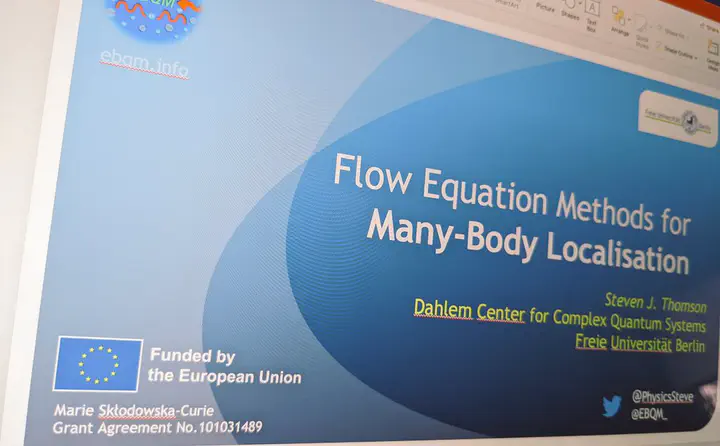Flow Equation Methods for Many-Body Localisation
 Title slide!
Title slide!
Abstract
Many-body localisation is a fascinating example of a scenario in which interacting quantum systems isolated from their environments can fail to thermalise. Key to our understanding of this enigmatic phase of matter are emergent conserved quantities known as local integrals of motion (LIOMs, or l-bits), which prevent thermalisation from occurring. In this talk, I will present a powerful new numerical method known as the ‘tensor flow equation’ technique ideally suited for computing LIOMs [1]. Using this method, we’ll look at a model of interacting fermions in a quasiperiodic potential and show that an MBL phase exists. We will directly compute the LIOMs and show how – in contrast to disordered systems – they retain a strong fingerprint of the underlying quasiperiodic potential. We’ll also look at the LIOMs in a disorder-free system with a uniform electric field, a scenario known as Wannier-Stark localization, and show that flow equations reveal an important difference between Wannier-Stark localisation and conventional MBL. Time permitting, I’ll also sketch how this technique can be used to address non-equilibrium dynamics [2], periodically driven systems [3], and dissipative dynamics [4], as well as extensions to two [2] and even three dimensions.
[1] – S. J. Thomson and M. Schiró, https://arxiv.org/abs/2110.02906
[2] – S. J. Thomson and M. Schiró, Physical Review B 97 (6), 060201(R) and Physical Review Research 2 (4), 043368
[3] – S. J. Thomson, D. Magano and M. Schiró, SciPost Phys. 11 (028)
[4] – L. Rosso et al., SciPost Phys. 9, 091
.